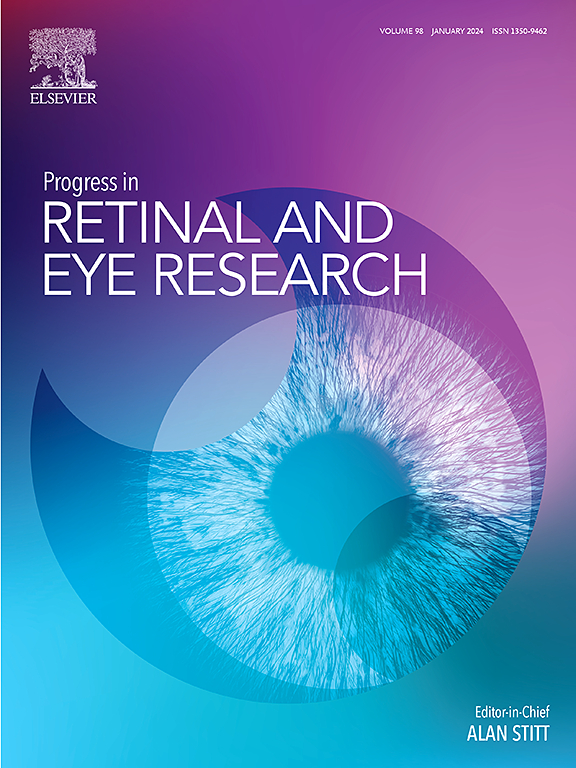双重遗传模式:具有不同分子机制的非综合征遗传性视网膜疾病表型谱。
IF 14.7
1区 医学
Q1 OPHTHALMOLOGY
引用次数: 0
摘要
遗传性视网膜疾病(IRDs)包括多种疾病表型,已知其临床和遗传均具有异质性。更复杂的是,据报道,一些 IRD 相关基因的致病变异可导致常染色体显性(AD)或常染色体隐性(AR)疾病。双重遗传的可能性给变异解释和患者遗传咨询带来了挑战。本综述旨在确定每个 IRD 相关基因的双重遗传背后的分子机制是已经确立,还是尚未得到正确理解,或者这种关联是否值得怀疑。由于每个基因的蛋白质结构和功能各不相同,我们将逐一对其进行详细讨论,但每个基因都有重叠的特点。例如,有 8 个基因只报告了数量有限的致病变体或与第二种遗传模式有关的热点区域。而 CRX 和 RP1 则根据变异类型和/或位置显示出 AR 和 AD 致病变异的不同空间模式。AIPL1、CRB1 和 RCBTB1 等具有可疑双重遗传性的基因凸显了仔细考虑等位基因频率数据的重要性。最后,强调了动物和细胞模型中的相关功能研究在验证变异体的生化或分子效应方面所起的关键作用。本文章由计算机程序翻译,如有差异,请以英文原文为准。
Dual inheritance patterns: A spectrum of non-syndromic inherited retinal disease phenotypes with varying molecular mechanisms
Inherited retinal diseases (IRDs) encompass a variety of disease phenotypes and are known to display both clinical and genetic heterogeneity. A further complexity is that for several IRD-associated genes, pathogenic variants have been reported to cause either autosomal dominant (AD) or autosomal recessive (AR) diseases. The possibility of dual inheritance can create a challenge for variant interpretation as well as the genetic counselling of patients. This review aims to determine whether the molecular mechanisms behind the dual inheritance of each IRD-associated gene is well established, not yet properly understood, or if the association is questionable. Each gene is discussed individually in detail due to different protein structures and functions, but there are overlapping characteristics. For example, eight genes only have a limited number of reported pathogenic variants or a hotspot region implicated in the second inheritance pattern. Whereas CRX and RP1 display distinct spatial patterns for AR and AD pathogenic variants based on the variant type and/or location. The genes with a questionable dual inheritance, namely AIPL1, CRB1, and RCBTB1 highlight the importance of carefully considering allele frequency data. Finally, the crucial role relevant functional studies in animal and cell models play in validating a variant's biochemical or molecular effect is emphasised.
求助全文
通过发布文献求助,成功后即可免费获取论文全文。
去求助
来源期刊
CiteScore
34.10
自引率
5.10%
发文量
78
期刊介绍:
Progress in Retinal and Eye Research is a Reviews-only journal. By invitation, leading experts write on basic and clinical aspects of the eye in a style appealing to molecular biologists, neuroscientists and physiologists, as well as to vision researchers and ophthalmologists.
The journal covers all aspects of eye research, including topics pertaining to the retina and pigment epithelial layer, cornea, tears, lacrimal glands, aqueous humour, iris, ciliary body, trabeculum, lens, vitreous humour and diseases such as dry-eye, inflammation, keratoconus, corneal dystrophy, glaucoma and cataract.

 求助内容:
求助内容: 应助结果提醒方式:
应助结果提醒方式:


